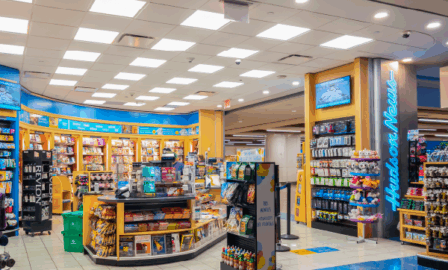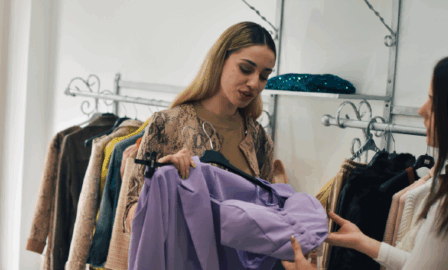Retail Safety During COVID-19
Retail safety during COVID-19 has becoming an increasing concern across the globe as essential businesses remain open. As uncertainties persist and conditions change daily, retailers must constantly adjust to new health guidelines and restrictions to stop the spread of COVID-19. For example, Vermont’s government recently limited large retailers to only sell essential goods to reduce store traffic, causing some stores to close aisles and remove non-essential stock from the shelves. Most importantly, though, retailers should be taking their own precautionary measures to prevent the spread of the virus to ultimately protect employees and customers.
Managing In-Store Logistics for Retail Safety During COVID-19
Many retailers have already taken steps to adjust their operations for COVID-19. Their main priorities have been focused on implementing special sanitation practices and physical measures to promote social distancing while customers browse the stores or checkout.
Sanitation
CDC guidance encourages retailers to set protocols for dealing with sick employees, post reminders for hand washing practices in-store, and make disposable wipes available and accessible. Surface areas in frequent contact with large numbers of customers can also be diligently wiped down on a regular basis. For example, checkout lanes and touchscreens should be sanitized every half-hour. Most essential retailers have also adjusted their hours of operation to allow for deeper cleaning, such as Target, who added extra hours to store payroll. Walmart has also made plans for third-party sanitization practices.
Other retail efforts to protect customers and employees have included removing food sample offerings, providing employee emergency leave plans, and requiring regular temperature-taking for employees. Additionally, PPE use has been ramped up to limit air transmission between customers and employees. Plexiglass shields and sneeze guards are being used to physically separate cashiers from shoppers. For store and distribution center employees, disposable masks and gloves are also being made increasingly available.
Social Distancing
Retail locations are also implementing social distancing measures to stop the spread of COVID-19. They have restricted permitted store occupancy further and further, with Kroger now allowing only 50% of their store capacity to be occupied at any given time. Target, along with many other retailers, uses floor markings and employee monitoring to enforce social distancing. In other stores, one-way aisle shopping paths are being used to control store flow and mitigate physical closeness.
Many stores are also adjusting their fulfillment offerings. Even before the outbreak of COVID-19, companies were increasing their curbside pickup and “buy-online, pickup in-store” options, which has now proved helpful for adhering to social distancing. Walgreens has even turned their pharmacy drive thru windows into pick-up locations for all types of goods. Bed Bath & Beyond launched curbside pickup on April 1 and in it’s first whole week fulfilled more than 11,000 orders.
When in the stores, an increased focus is being placed on contactless payments as well. On March 27, Walmart began to provide options for no-contact payment, pickup and delivery, giving customers the option to use QR codes synched with the Walmart Pay app to purchase goods. While already adopted by many retailers, contactless payment now is playing a bigger role as consumers are less likely to want to use cash or to touch the pin pad.
Assistance from New Technology
Technology is an important tool that retailers are using to assist with managing sanitation and social distancing to stop the spread of COVID-19. We’ve seen multiple cases of existing technology being repurposed for novel uses during the pandemic to help aid in customer and associate safety.
Traffic & Flow Monitoring Technology for Retail Safety During COVID-19
Kroger is one example of a retailer that re-purposed its preexisting technologies for use during the pandemic. Their QueVision technology was implemented nearly 10 years ago throughout many Kroger locations, and was originally purposed for checkout efficiency by tracking the required number of open registers based on shopper numbers. Now, it is being used to monitor store capacity. QueVision can track the number of customers that enter and leave Kroger stores, which helps maintain effective social distancing practices. It also reduces checkout times, which helps customers limit public exposure. Without leveraging technological capabilities, retailers would have a much more difficult time implementing real-time protections in their stores. This has caused many tech companies to step in and offer new products, in some cases even for reduced or no cost.
Store Cameras & Loss Prevention Technology
Indyme, a shopper engagement and loss prevention tech company, has positioned their SmartDome product as a tool to help remind shoppers of social distancing based on real-time analysis of the physical situation. Resembling a security camera, the SmartDome understands when shoppers are too close to one another and alerts them with audio reminders to maintain a six-foot separation. This is helpful particularly in checkout areas, as well as service counters, store entrances, and other high-traffic parts of the store.
Mobile Self-Checkout Technology
FutureProof Retail is another tech product being used to manage COVID-19 protections. Using line-free checkout technology, it keeps 20-30% of customers out of line during busy periods by guiding employees to offer options at the back of lines, at the store entrance, and through announcements. It can also allow retailers to customize the express checkout app, letting them manage their branding. As long as the national state of emergency remains in place, the company is continuing to donate this technology to grocery stores, supermarkets, pharmacies, and other essential businesses to help them enforce social distancing.
Other Out-of-Store Tech Tools
Other tech tools are becoming more widely used to help retailers connect with their customers during this time. One shopping platform that is letting retailers use their service for free for one year is Streetify. This platform provides personalized shopping “avenues” with virtual storefronts. It allows businesses to display “window messages” with information about their hours of operation, delivery options, items in stock, and deals to help them keep customers informed. Since it launched in March, the platform has been able to support virtual storefronts for over 5 million brands. AxleHire is another app that assists with social distancing by providing contactless delivery, letting customers sign for their packages through their own personal mobile devices. This has been especially relevant, as demand for ordering services from retailers has continued to rise significantly.
Essential retailers have observed a variety of changes in store traffic over the past few months. Between March 20 and April 20, daily changes in foot traffic at warehouse store Sam’s Club ranged from around -40% to +16%, while Costco’s daily foot traffic was consistently lower – ranging from -60% to -15%. Target’s essential goods sales had risen by over 50% in March, and the retailer is expected to reach 7% same-store sales growth for the fiscal first quarter, even though foot traffic at store locations has decreased. It is likely that even as the country starts to emerge from this pandemic, foot traffic will stay lower in comparison to past years as consumers are still wary about being in public and at risk for infection. This makes it all the more critical for retailers to provide as many safety precautions as possible to help both the customer and the employees feel protected.
Subscribe to Clarkston's Insights
Contributions by Courtney Loughran.



